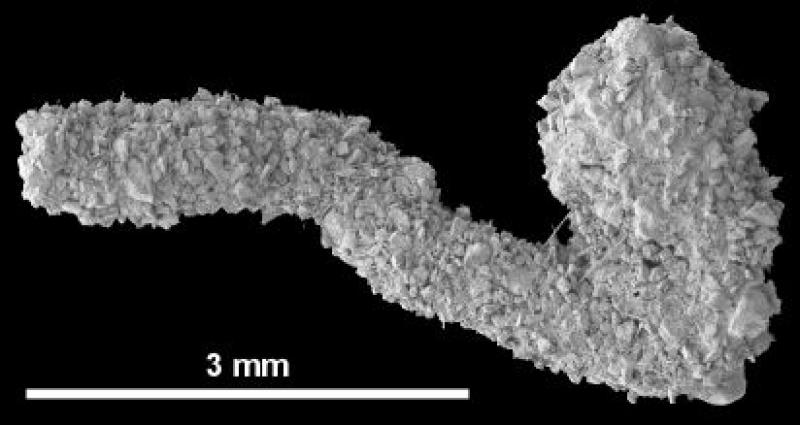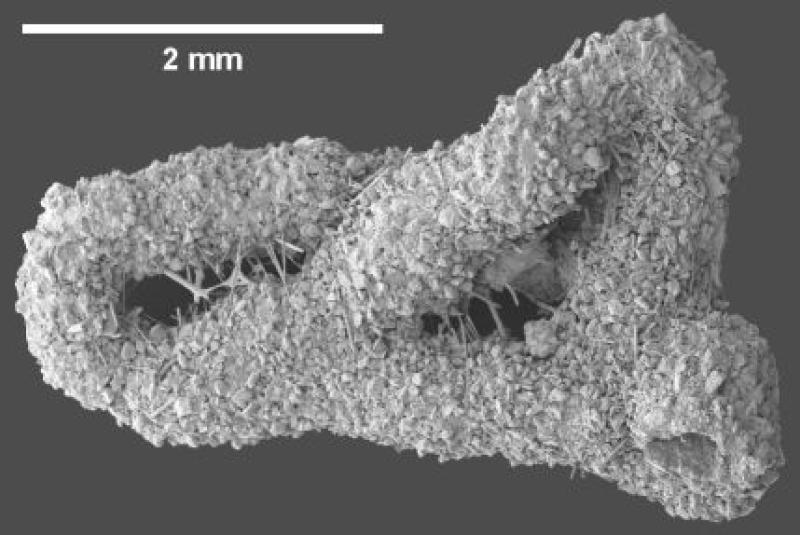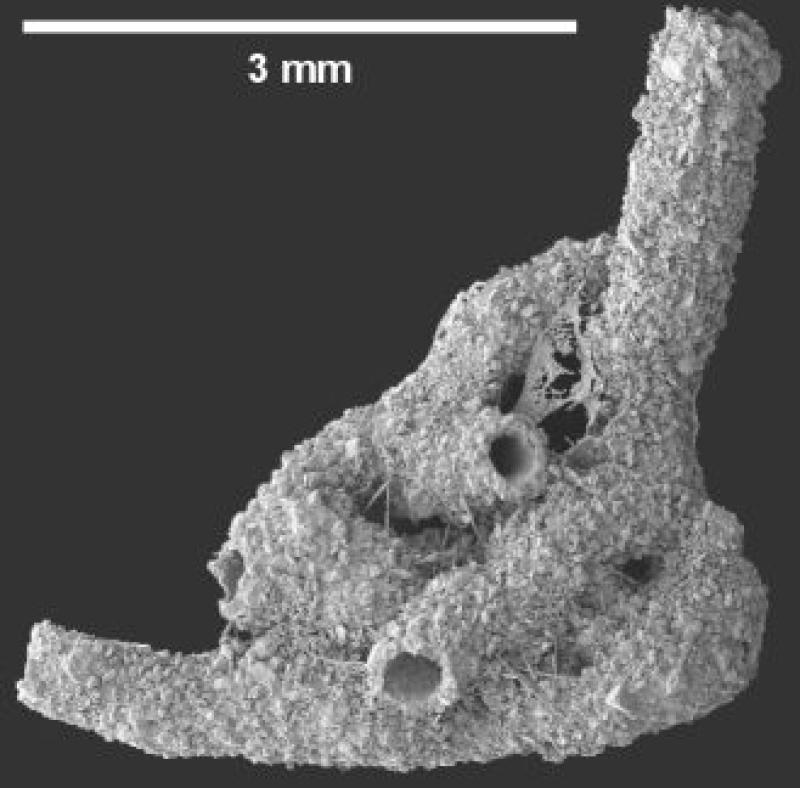Saccorhiza ramosa (Brady, 1878)
Saccorhiza ramosa (Brady). Jones 1994, p 33 pl 23 figs 15-19.

- The proloculus and the initial part of the tubular chamber
- Collected: 16 Oct. 1987, N Barents Sea, 230 mwd, modern mud

- Twisted fragment of the tubular chamber; the test typically incorporates sponge spicules
- Collected: 16 Oct. 1987, N Barents Sea, 230 mwd, modern mud

- Agglomerate of at least three twisted fragments of one or several specimens; the lumen is seen where the tube is broken
- Collected: 16 Oct. 1987, N Barents Sea, 230 mwd, modern mud
Remarks:
A large arenaceous foraminifer ubiquitous of muddy sediments on the Barents-Kara shelf; typically found as tightly twisted fragments of the long, chaotically coiled, tubular test; often incrusts large foreign particles, such as dropstones, which may serve as a counterbalance to the test extended above the sediment-water interface; characteristically incorporates transverse-oriented sponge spicules, which support a reticulopodium network for suspension feeding; has a low fossilization potential.
